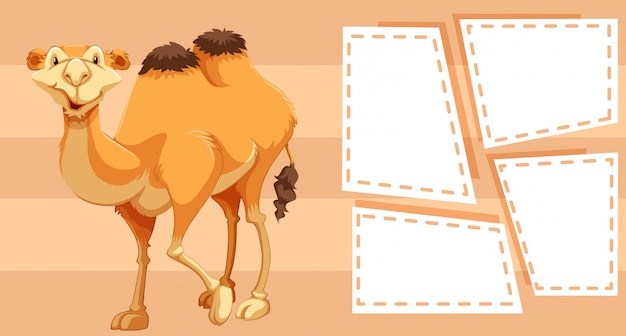Surprising and Interesting Facts About Camels

Camels are known as the ships of the desert due to their ability to travel long distances with heavy loads.
There are two main types of camels: dromedary camels, which have one hump, and Bactrian camels, which have two humps.
Camels can go for long periods without drinking water, as they can store it in their humps.
The humps of a camel are made up of fat, not water, which provides them with energy when food and water are scarce.
Camels have long, thick eyelashes that protect their eyes from the desert sand.
A camel can close its nostrils to keep out sand during sandstorms.
Despite their size, camels have incredibly soft and padded feet that allow them to walk on hot sand without getting burned.
Camels have a third eyelid called a nictitating membrane that protects their eyes from blowing sand.
Camels can tolerate a body temperature fluctuation of up to 6 degrees Celsius (10.8 degrees Fahrenheit) without becoming distressed.
Camels have a unique gait, moving both legs on one side of their body at the same time, which helps them navigate through sandy terrain.
The lifespan of a camel can range from 40 to 50 years.
Camels have a keen sense of smell and can detect water from up to 50 miles away.
On average, camels can run at speeds of 40 miles per hour (65 kilometers per hour) in short bursts.
Camel’s milk is known to be highly nutritious and is consumed by people in various parts of the world.
Surprising and Interesting Facts About Camels part 2
Camels have tough mouths that allow them to eat thorny desert plants without getting injured.
A camel’s hump can shrink or increase in size depending on their food and water intake.
Camels can close their ears to protect them from sandstorms.
The gestation period of a female camel is around 13-14 months.
Camels have a unique ability to extract water from the food they eat, allowing them to survive in arid environments.
Camels have been domesticated for over 4,000 years and have played a vital role in the cultures and economies of desert regions.
Camels have a remarkable ability to conserve water by producing dry and concentrated urine.
The lips of a camel are split, allowing them to eat thorny plants without hurting their mouth.
Camels have thick fur on their body to protect them from the scorching sun during the day and keep them warm at night.
Despite popular belief, a camel’s hump does not store water, but rather fat reserves for energy.
Camels have a reputation for being stubborn, but they are actually highly intelligent animals.
Camels have the ability to close their nostrils to keep out sand and dust during sandstorms or strong winds.
Camels can go without drinking water for up to 10 days in extreme conditions.
Camels have a complex digestive system that allows them to break down even the toughest desert plants.
The long legs of a camel help them take firm steps on the shifting desert sands.
Camels have oval-shaped red blood cells, which help in efficient oxygen transport and prevent clotting.
In some African cultures, camels are used as a form of currency and are considered a sign of wealth.
Camels have thick insulating wool under their fur, which provides protection against extreme temperatures.
The hyoid bone in a camel’s throat is unique and allows them to make distinct vocalizations.
Camels have a keen sense of hearing and can hear low-frequency sounds that humans cannot detect.
During mating season, male camels make loud, deep, and guttural sounds to attract females.
The humps of a camel appear flat when they are empty, but become more rounded and firm when filled with fat reserves.
In ancient times, camels were used as important transportation animals along the Silk Road trade route.
Camels have large, tough footpads that spread out when they step, preventing them from sinking into the sand.
Camels have a thick, leathery mouth lining that protects them from ingesting sharp desert plants.
Camels have the ability to drink up to 30 gallons (113 liters) of water in just 13 minutes.
In addition to their humps, camels also store fat in their tails as an energy reserve.
Camels have a lifespan of more than 40 years, making them valuable long-term companions in desert environments.
Camels have been used by militaries in desert regions for transportation and logistical purposes.
Camels have strong immune systems and can resist many diseases and infections common to other animals.
Camels have a highly efficient cooling system that helps them survive in extreme heat, allowing them to maintain a constant body temperature.

